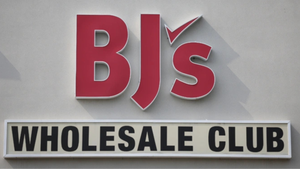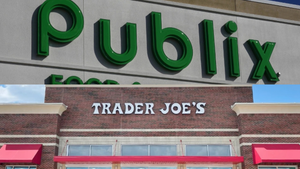A forum for contributed pieces from industry thought leaders, retailers, wholesalers and manufacturers. The views expressed are those of the authors.
Retailers can tame inflation with intelligent pricingRetailers can tame inflation with intelligent pricing
Holistic plan key to delivering right prices to right places at right time

Matthew Pavich is a contributor to Supermarket News and senior director of retail innovation at Revionics, an Aptos Company, an Austin, Texas-based provider of science-based solutions for pricing, promotions, markdowns and competitive insights to help enterprise retailers with price optimization. The views expressed here are those of the author.
 The steepest inflation in decades is impacting all parts of the retail supply chain, from growers and shippers to suppliers and CPGs. It is a global challenge that sharply affects consumer behavior and, unfortunately, there are no sure signs it will ease any time soon.
The steepest inflation in decades is impacting all parts of the retail supply chain, from growers and shippers to suppliers and CPGs. It is a global challenge that sharply affects consumer behavior and, unfortunately, there are no sure signs it will ease any time soon.
For retailers, inflation is primarily a pricing challenge. The solution involves making smart moves to manage rising costs for raw materials, goods and services. The best approach is to develop an overall strategy to achieve the right balance of prices, profits and customer satisfaction. This involves making surgical adjustments that blend in a comprehensive plan.
Retailers have been through inflationary times before, and many will rely on traditional methods of raising prices across the board or simply matching competitor pricing. These will not work today. The marketplace is too complex, fast-moving and competitive for simple methods to be effective.
To be successful today, retailers must view pricing holistically and make a series of surgically targeted steps that work together to achieve key business goals. Retailers that don’t adopt this approach will see revenue deterioration, unit deterioration, loss of market share and a worsening competitive position.
Holistic pricing techniques for inflationary times
So how should retailers begin? Start by creating a holistic pricing strategy that balances key business drivers. It sounds easy, but it is not because it also has to include other relevant factors such as regional differences, brand image considerations, consumer price tolerance, labor resources, inventory positions and shifting shopper trends.
The following techniques offer a framework for creating a holistic pricing strategy:
• Identify key items in the product mix. Some can be leveraged to go up in price and others can absorb a margin hit. Also, identify products that offer opportunities to take prices down and grow market share to produce long-term gains. The first step is to get a deep understanding of products that are most important to customers and how to use them to achieve specific goals.
• Leverage regional differences. Inflation affects the country at different rates. Supply-chain disruptions also vary by region. If you are a multinational company, the differences can be even more complex. Avoid simply taking a 10% price increase everywhere. It may be possible to take a 7% increase in Boston and a 4% increase in Cincinnati. Create a pricing strategy that is optimized based on consumer preferences in different regions.
• Adjust prices using competitive data feeds. Identify who’s moving first, who’s following, who moves prices up, who moves them down, and who is matching or following whom. Are matches trending 5% below? Do they go 2% above? If you know how and when your competitors take pricing actions, you are in a much better position to shift from reactive competitive pricing to more strategic and proactive competitive pricing decisions.
• Smart promotions are essential components of holistic pricing plans. Integrate everyday pricing with promotional pricing. Analyze current promotions and cut those that are least effective. By improving promotional profitability, retailers can help balance out cost pressures from inflation and limit the number of everyday price increases that are needed. For example, consider dropping a 25% discount to a 15% discount on an item where there’s not much difference in lift.
• Tap private-label products. Consumers are switching brands and trying new products like never before. Studies have shown brand loyalty is decreasing as prices continue to rise. In this environment, private-label products become more attractive. By competitively pricing private-label products, everyone wins. Consumers can purchase products at good prices, and retailers gain share while also maintaining margins.
• Aim for improvement, not perfection. If you can create a pricing plan that does just one thing to move the needle forward in difficult times, that’s a big win. Start with just one goal and drive value, and then learn from experience and continue to make improvements.
• Leverage artificial intelligence and advanced analytics. No retailer today can be successful in inflationary times using old-fashion techniques or legacy technology. Advanced analytic tools create what-if scenarios that predict outcomes for each pricing move. What will happen if you take a price up 7% or 8%? How will baskets, inventory levels and targeted customers be affected? Advanced analytics enables retailers to move in real time as competitive prices shift, costs increase, demand changes and supply-chain disruptions occur.
• Monitor real-time execution and make rapid midcourse adjustments. Loyalty takes time to build but is lost quickly. If you make too many pricing mistakes, you can alienate customers. It’s critical to monitor sales data in real time and make rapid pricing adjustments to keep on top of marketplace and consumer shifts.
Win-win pricing strategy
Many retailers have struggled during inflationary times; however, the techniques outlined above are time-tested and have been shown to achieve great success. For example, they have produced strong results in such inflationary markets as Brazil in recent years and in the United States and Europe over the past year.
Retailers simply can’t take a shot in the dark and raise prices across the board to cover rising costs. Also, it is important to understand this isn’t the time to see how much consumers will pay without considering the impact of each pricing decision. Used effectively, these techniques can lead to a win-win for retailers and consumers alike.
The keys to success during inflationary periods are creating a holistic plan that balances business goals and employing advanced analytics to make smart, surgical decisions that deliver the right prices in the right places at the right time to drive revenue, profits and customer satisfaction.
About the Author
You May Also Like






